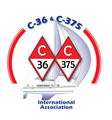I went to a commercial boat show in Seattle last weekend and stopped by a couple exhibits dealing in soundproofing materials. There are some interesting options out there, and possibly not too pricey. I'd like to take on such a project, designed to quieten engine sounds, but wanted to approach this methodically so that I could write it up authoritatively for our C36IA Technical library. As this will likely be a many months project, I expect to post several threads on the subject, and thus the tile for this one as "Part 1".
I purchased a sound meter - for not a great many $ - at Frys, and want to use the sound meter to document the sound levels BEFORE beginning to add material. Obviously, to be a valid assessment we need to eliminate as many variables as possible. I've already decided that the measurements need to be measured [U]on a no wind day, while tied in the slip, and with no aircraft flying over [/U]on final approach to PDX airport. Alright, that much is decided. But I have the following questions for you folks, who will be my partners in this project:
1) Should the engine be IN GEAR OR NOT?
2) WHAT RPM should I use?
3) WHERE should I capture the baseline sound measurements?
4) Are there ANY OTHER QUESTIONS that I should address in this study?
In this Part 1, let's limit the discussion just to these four questions. In the following Parts we'll have ample opportuity to discuss the strategies I will use for the project.
Ideas, anyone?
Larry Brandt
S/V High Flight #2109
Pacific Northwest, PDX-based
2002 C-36 mkII SR/FK M35B


1) Should the engine be IN GEAR OR NOT? - [B]Yes In Gear[/B]
2) WHAT RPM should I use? [B]2000[/B]
3) WHERE should I capture the baseline sound measurements?
[B]In front of the engine about 24" away towards the bow and at a height at the top of the engine cover[/B]
4) Are there ANY OTHER QUESTIONS that I should address in this study?
[B]Close all ports and close the companionway doors.[/B]
[B]Unplug the shore power cord- in case the charger transformer produces humming[/B]
I think the best way to tell this story is using a graph. Y-axis is the dB sound level and the x-axis the thickness of the soundproofing, or the RPM and is it in gear or not. There could be several lines or curves describing the result of the measurements.
Haro Bayandorian, 1999 C36 MKII, Sail La Vie #1787, M35B,
Coyote Point, San Mateo, CA.
Great comment about closing all ports and the companionway washboards! I hadn't thought about that. But I wonder if maybe the companionway ought to be open, with the sliding hatch slid forward, as that is a more normal modus operandi. No...maybe not, as different dodgers on different boats might yield different results. My guess is that turning off the charger would be so minor relative to a diesel engine that it wouldn't be noticeable; still, it's easy enough to include on a checklist.
I was thinking about recording sound measurements at several points: At the helm; at the doorway to the V-berth; at the forward seat of the starboard pair; at a point about 12 inches above the inboard/stbd edge of the galley sink; and maybe even a point somewhere in the aft cabin, but with the cabin bare (ie, no mattress or other items there).
Larry Brandt
S/V High Flight #2109
Pacific Northwest, PDX-based
2002 C-36 mkII SR/FK M35B
Some years ago I purchased a sound meter from Radio Shack to assist in preparing my defense against a charge of Playing the Music Too Loud in my car. It turned out that the City maintained a noise contour map of the city and I was able to use the specs of my car stereo and real-life measurements as well as the zoning map to prove that the cop couldn't even have heard my music.
I bring this all up because I remember that I had to read the instructions that came with meter quite carefully as they pointed out how to measure and what the limitations of the device were. I would consult the manual to find out the optimal place from which to measure. Additionally I would measure from where you usually would be while the motor runs, not forgetting the cockpit.
Regarding your other questions I concur with Haro; in gear, at cruising RPM, and with the shore power (and refer?) off.
Good luck!
- nick
Nick Tonkin
*Former* Website Administrator, C36/375IA
*Former* owner, C36 tr/fk #255, Santa Barbara, CA
I'd be very interested in this as well and am going to be going through the same process over the winter, so it will be fun to compare notes.
For me, I'll be testing at 1,000 RPM (idle) and 2,400 RPM (cruising) in a standard cruising configuration (engine lid in place) from (aft to bow): At the helm (nobody likes to motor all day with a noisy boat), standing in the galley, and in the v-berth with the door closed (as if someone is trying to nap while under power). The big thing for testing from the helm will be to avoid wind noise....
By the way - if you haven't heard it, there's a [B][I]great[/I][/B] podcast from RadioLab about the physics of sound and decibels. Most interesting: at a certain point, sound waves create enough cavitation that air turns to plasma...
[url]http://www.radiolab.org/blogs/radiolab-blog/2010/oct/04/walls-jericho/[/...
__________________
Steve Ramsey - Puget Sound
S/V Manonash - '96 C36 mkII (#1586) - M35B
Steve, you may beat me to the finale of this project, as I don't intend to work on this project actively until the weather warms up in the spring. My winter goal is simply to Plan the project.
I do know that the first 'layer' of sound deadening I want to apply is a 'paint' that requires a quite pleasant temperature of both the liquid and of the ambient air. Seems like a May 2012 beginning for me. In a few weeks I'll begin another thread on sound mitigation strategies, and we can then talk through the various options out there.
Larry Brandt
S/V High Flight #2109
Pacific Northwest, PDX-based
2002 C-36 mkII SR/FK M35B
Larry - one other thing that I was thinking about is the mechanism used to place or hold the measuring instrument. That is it should be placed on a soft sponge or hand held so that the vibration of the boat ( or the engine) is not transferred to the instrument. If you decide to hold it in your hand - you must also be standing the same place with an identical clothing. We also must not loos track of what it is that we are trying to accomplish. It is clear to me that the goal of this experiment is not to measure the decibels heard from various points along the boat, instead it is to measure the effect of adding a soundproofing barrier. By measuring from the same identical point it would accomplish this goal. I would also consider the temperature so that it is identical before and after. I would think that "[I]at a point about 12 inches above the inboard/stbd edge of the galley sink[/I]" is a good place. And leaving the companion way stairs and the engine cover on is a good idea. I would be very curious with the result of this change as when I try to speak with my ship mate when the engine is running it is always impossible to hear down below. Let us know how it turns out.
Haro Bayandorian, 1999 C36 MKII, Sail La Vie #1787, M35B,
Coyote Point, San Mateo, CA.
Thanks for your efforts on this Larry.
I sound proofed my engine compartment a few years ago, which I described
in a thread on this forum regarding my mods to the engine compartment. You then split the thread into a 2nd regarding the sound insulation.
engine hatch [url]http://www.c36ia.com/forums/showthread.php?t=562[/url]
Sound insulation [url]http://www.c36ia.com/forums/showthread.php?t=639[/url]
I agree with the points to take sound measurements. I might take a sample at the settees as well. I'd also take samples at the noted locations with the engine in neutral at a high idle (1000 rpm?) like when charging batteries, in addition to under load at cruising speed.
I found that the sound insulation was one of the best things I've done; it makes a big difference at the helm while underway, as well as down below. I still need to insulate the areas in the aft cabin.
Gary and Cathy Price
1997 C36 Mk II Tall Rig/Wing Keel Imagine...
Hull # 1617
Worton Creek, Md.
Northern Chesapeake Bay